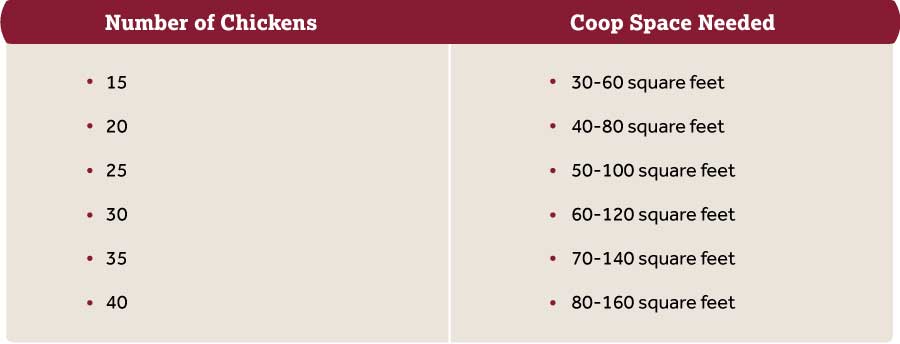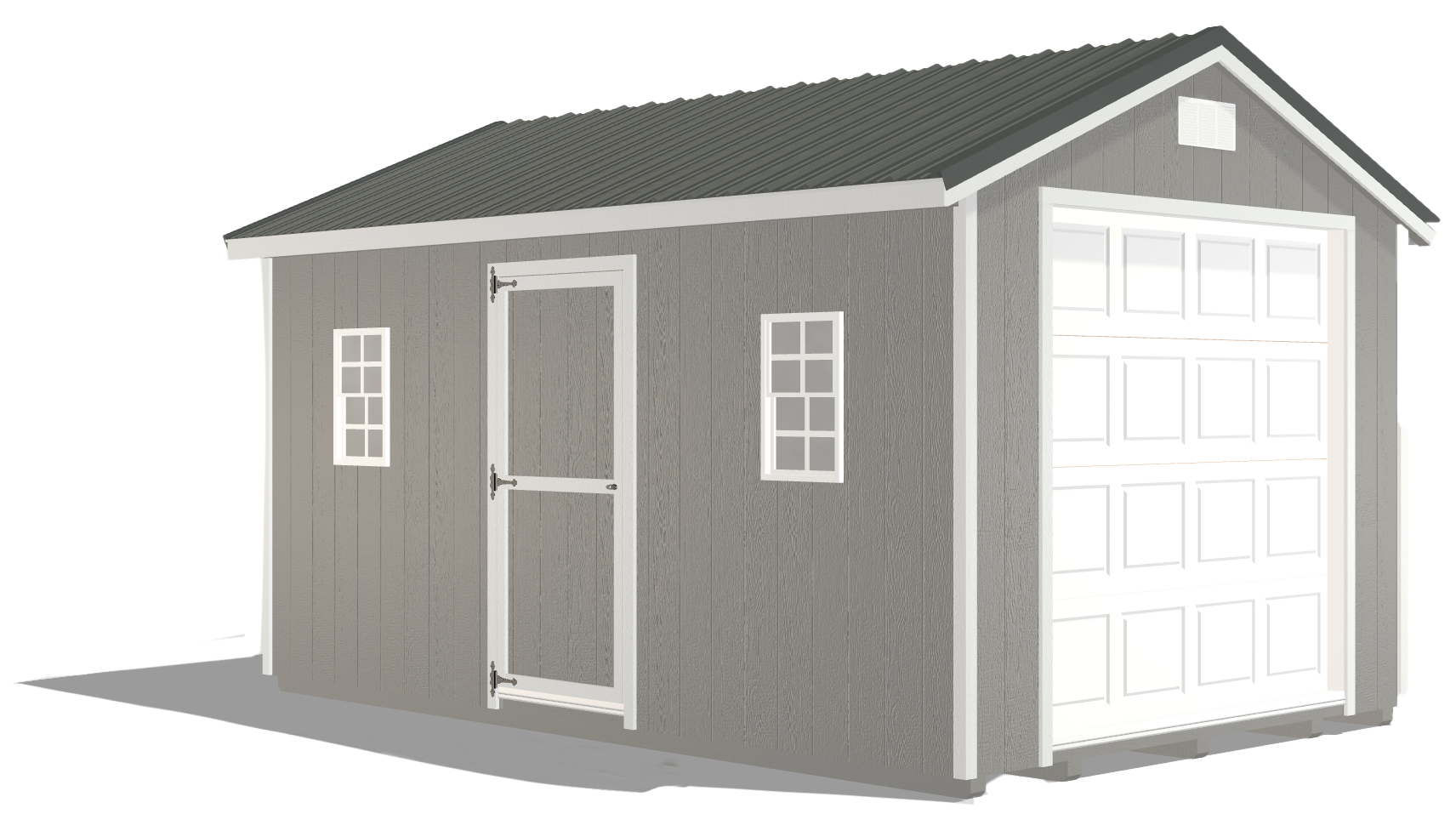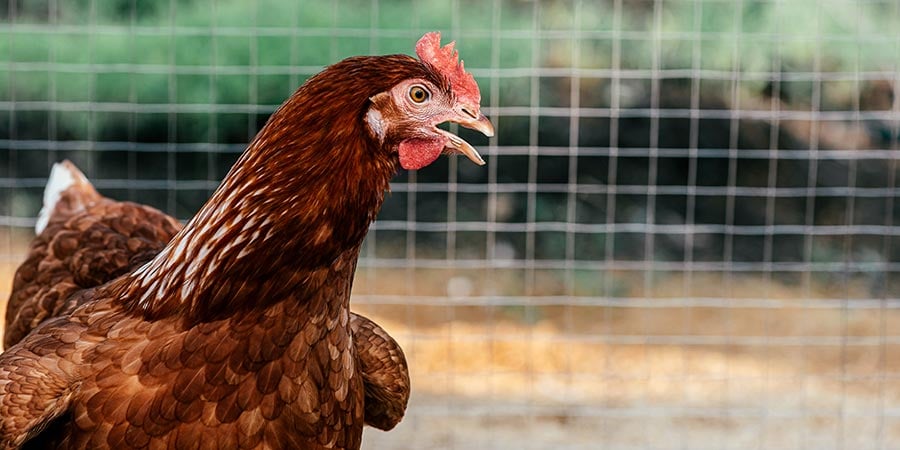Homestead Chicken Coop Plans Should Include These 4 Things
by Dakota Storage Buildings, on April 12, 2022
Consider these things as you look into ideal chicken coop plans for homestead hens.
Whether you've already begun to homestead or you're getting ready for the next step in your journey, now may be the right time to invest in chickens.
You may want them for poultry, eggs, or both — no matter the case, the first step is choosing the chicken breed(s) that is best for your needs and whether or not you want or need a rooster. From there, you'll need to decide how many chickens you want.
Knowing the answers to these questions will help you choose the right coop size for your flock. You'll need a coop large enough to house all your chickens and provide safety from predators and protection from the blistering sun, torrential rain, and freezing snow. Here are a few fundamentals that you should consider as you look into chicken coop plans.
Chicken Coop Plans Should Include Adequate Space
Adequate space for homestead chickens to cohabit peacefully is essential. If they’re crowded together or have to compete for space, they're likely to start anti-social and aggressive behaviors like feather pecking and wound inflicting. Once excessive actions start, it can be difficult to keep it from spreading throughout the flock, and if left unchecked, can turn into cannibalism.
While hens naturally set up a social hierarchy (aka pecking order), destructive behavior can become abnormally heightened during the winter when they're bored due to reduced egg-laying or when there's competition for limited resources like food, water, or roost space.
To provide adequate space, you’ll need between 2 and 4 square feet per standard size chicken for them to live comfortably. Here’s a simple chart for reference.

Having the right size homestead chicken coop and outdoor run for the number of chickens you own will be the difference between happy hens and cheerless chickens.
Chicken Coop Plans Should Have Appropriate Ventilation
Chicken coops need to be ventilated all the time — day and night, summer through winter.
Homestead coops should be cool in the summer and dry in the winter. Correct ventilation is crucial when it comes to temperature and air regulation. A good flow of air is the best way to keep chickens healthy.
Chickens generate lots of water vapor from both their breath and excrement, creating humanity in the coop. High humidity — particularly in cold weather — makes chickens more susceptible to respiratory illness and frostbite. Proper ventilation will remove this threatening moisture. Most chicken breeds can withstand surprisingly cold temperatures without getting frostbite as long as the air inside the coop is dry.
Good ventilation is also necessary to remove heat from the coop during warmer weather. Homestead chickens do best in temperatures below 75°F and start to suffer above 90°F, so ventilation is needed to keep the coop at least as cool as the outside air. For these reasons and more, it’s critical that chicken coop plans include appropriate ventilation.
Helpful Resources:
- How To Raise Chickens in Winter
- Chicken Coop Essentials: Providing Shelter from Extreme Temperatures
Chicken Coop Plans Should Offer Security
Providing a haven for your hens keeps them protected and provides a sense of safety. Protecting your flock from potential predators is a crucial aspect of owning and raising chickens. Due to the docile nature of chickens, they serve as easy prey for a number of predators, such as foxes, raccoons, opossums, and hawks.
Many predators are not initially drawn to chicken coops because of the chickens, but by other sources of food, such as feed or trash. A clear first step, then, is to keep extra/stored food, trash cans, and compost bins away from your homestead chicken coop.
Here are a few additional ways to ensure security.
- Inspect coop walls and run fencing for gaps
- Check the frame, roof, door, and windows for structural weakness
- Lock up chicken feed when it’s not being used
- Install motion-activated lights to scare off nighttime predators
- Consider surrounding the coop and run with an electric fence
- More ideas
Chicken Coop Plans Need to Account for Comfort
Coops protect your flock from predators but also threatening elements. You want your chickens to remain comfortable and safe from raging winds, blistering heat, painful hail, and heavy downpours. Your chicken coop plans should include water-resistant materials, paint, roofing, and more. There is nothing more miserable than a wet chicken.
Homestead chickens with secure access to grass and dirt are free to scratch around, soak up the sunshine, and take dirt baths in a protected and safe way that will keep them happy and comfortable.
Heat can cause additional stress. Heat stress can damage organs, cause egg deformation, and even death. Ensuring your chickens have 24/7 access to cool drinking water and shade will help regulate their temperature from the inside out. This is when a coop that's large enough for your entire flock comes in handy. Keep this in mind as you explore chicken coop plans.
Providing comfort for chickens also includes access to nesting boxes for egg-laying and roosts for off-the-floor sleeping. The rule of thumb is to provide one nesting box for every 3-4 hens, but it never hurts to have more. Also, allow for at least 8 inches of roosting bar per hen.

Conclusion
Your homestead chicken coop has a big job. It has to keep your hens healthy, safe, and comfortable. You can do that by finding chicken coop plans that provide adequate space, appropriate ventilation, security from predictors and weather, and comfort for sleeping and egg-laying. If any of these things are not offered, chickens can get sick or killed, eggs could get eaten or broken, and chickens can begin brutally fighting among themselves for space.
As you consider chicken coop plans, think about the benefits of coops with enclosed runs. Quality coops with built-in runs can often guarantee a level of production that's beyond a DIY run enclosure or cheaply constructed building.
Want to discover more coop insights before making a purchase? Download our guide, How to Choose the Best Chicken Coop for Homesteading, to guarantee your investment will protect your flock and be worth your money.


























